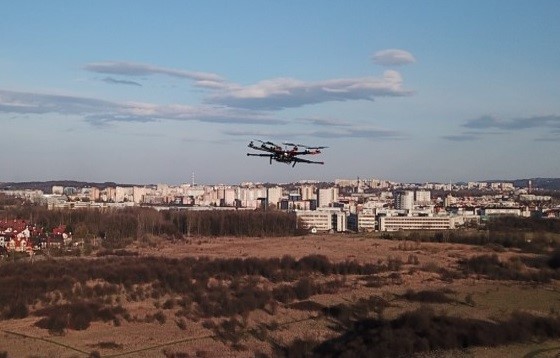Faculty of Physics and Applied Computer Science of the Stanisław Staszic AGH University of Science and Technology in Kraków, Kraków - PhD. Eng. Piotr Sekuła

 Project title
Project title
Faculty of Physics and Applied Computer Science of the Stanisław Staszic AGH University of Science and Technology in Kraków, Kraków - PhD. Eng. Piotr Sekuła
 Name of Beneficiary/Beneficiaries
Name of Beneficiary/Beneficiaries
Faculty of Physics and Applied Computer Science, AGH University of Science and Technology, Kraków
 Name of programme
Name of programme
Operational Program Knowledge Education Development
 Competition
Competition
Interdisciplinary Environmental Doctoral Studies "Physical, Chemical and Biophysical Foundations of Modern Technologies and Materials Engineering" (FCB)
 Project value
Project value
PLN 10,123,883.00 for 75 beneficiaries
 Funding value
Funding value
PLN 134,895.00 per doctoral student
 Project delivery period
Project delivery period
from September 1, 2017 to August 31, 2022 (extended to October 31, 2023)
Get to know our team
Composition of the research team:
PhD. Eng. Piotr Sekuła
PhD. Eng. Mirosław Zimnoch, prof. AGH
prof. DSc. Zbigniew Ustrnul
DSc. Anita Bokwa, prof. UJ
See the effect of our work

What problem does our project solve?
Research carried out as part of the project concerned dust pollution in urbanized areas and areas with a wide variety of terrain. Air quality has a significant impact on human living conditions, the condition of ecosystems and processes related to climate change. Observed pollution levels depend largely on terrain and meteorological conditions. The project analyzed the impact of local topography on weather conditions on a city scale. The research area included the city of Kraków and the Małopolska region. The obtained results confirmed that in the case of Krakow, the key factor modifying weather conditions on a local scale is the terrain. It may adversely affect the weakening of wind speed in the valley, resulting in the accumulation of pollution and the occurrence of high concentrations even at low emission levels. Research carried out as part of the project included both field measurements using aircraft (drone and tethered balloon), stationary measurement points (meteorological and air quality measurements) as well as high-resolution numerical weather forecast models (ALADIN-HIRLAM system). Numerical simulations of the spread of pollutants were complemented by balloon campaigns of vertical atmospheric profiling, which showed that for certain weather conditions, the concentration of pollutants inside the valley is constant during the day, and above the height of the valley floor there is a significant improvement in air quality caused by the exhaust of pollutants. They also showed that in specific situations, despite strong winds (some periods of mountain winds), the air quality in Krakow may deteriorate.
Who will benefit from the project results?
The results obtained as part of the project implementation can be used in air quality management by individual administrative units, e.g. commune, city, especially in spatial planning and environmental protection policy. However, it is necessary to use high-resolution numerical models on a longer time scale to assess the impact of terrain on the dispersion of pollution in the analyzed area.